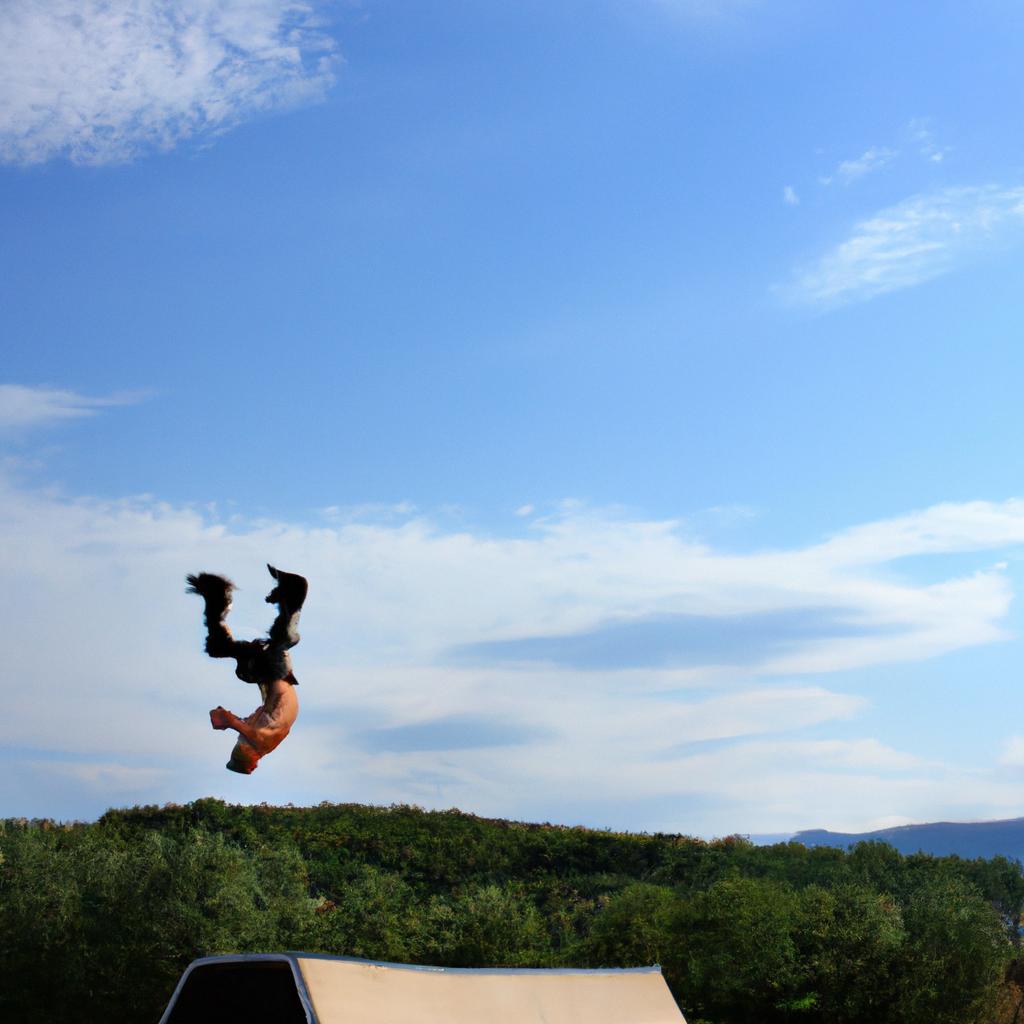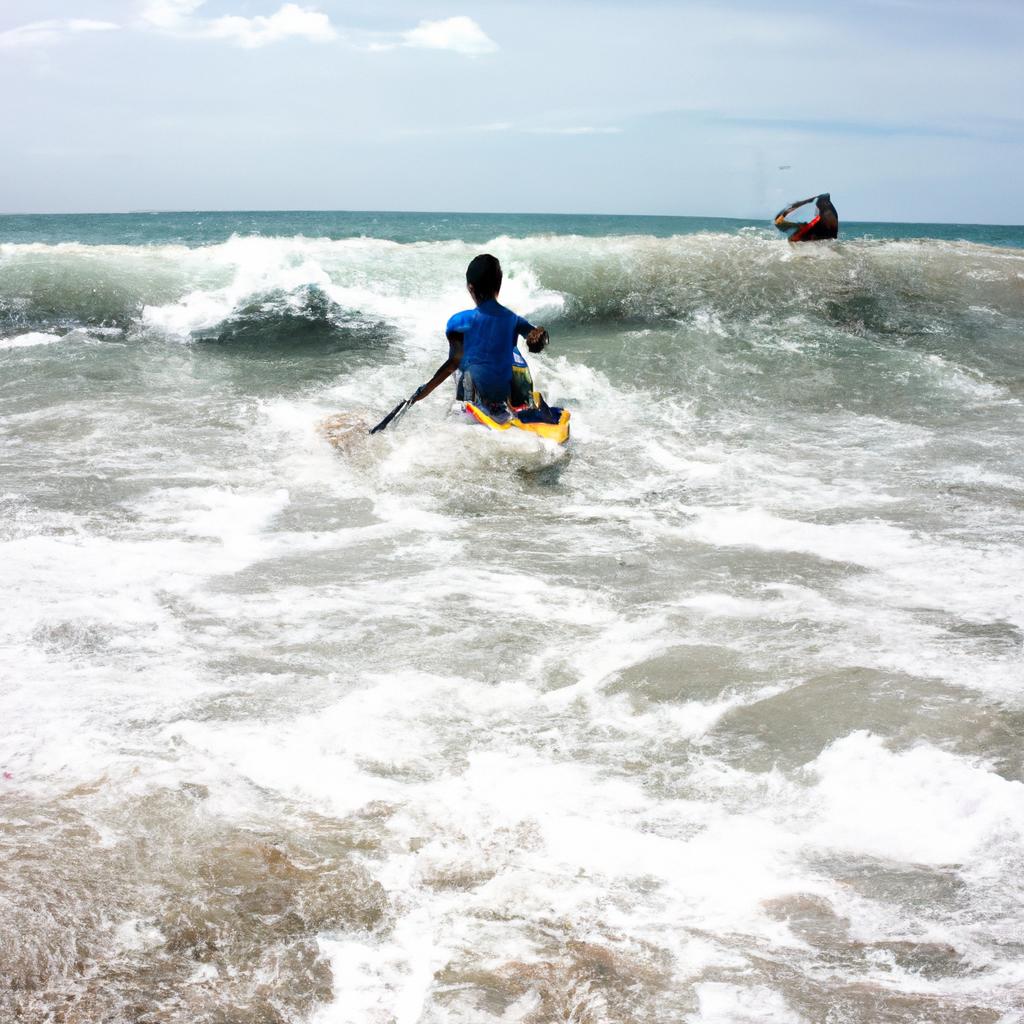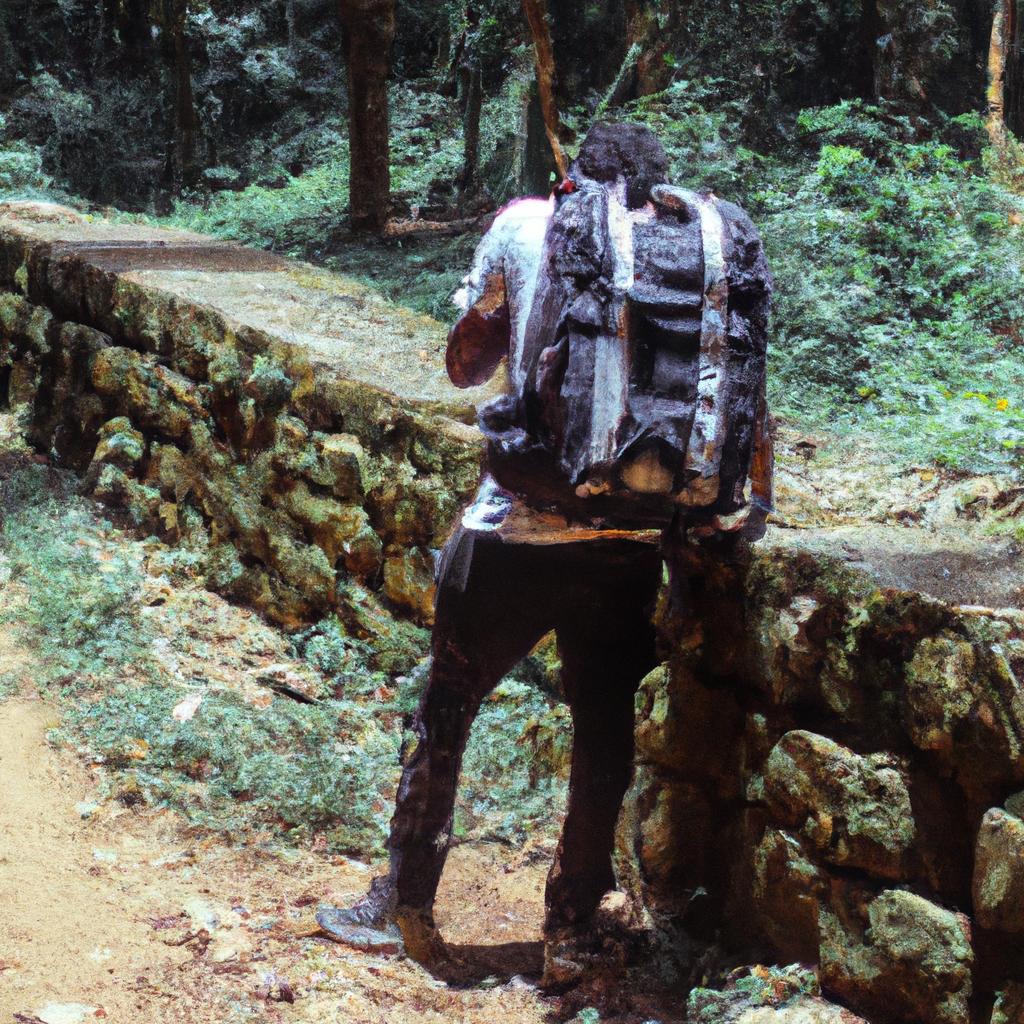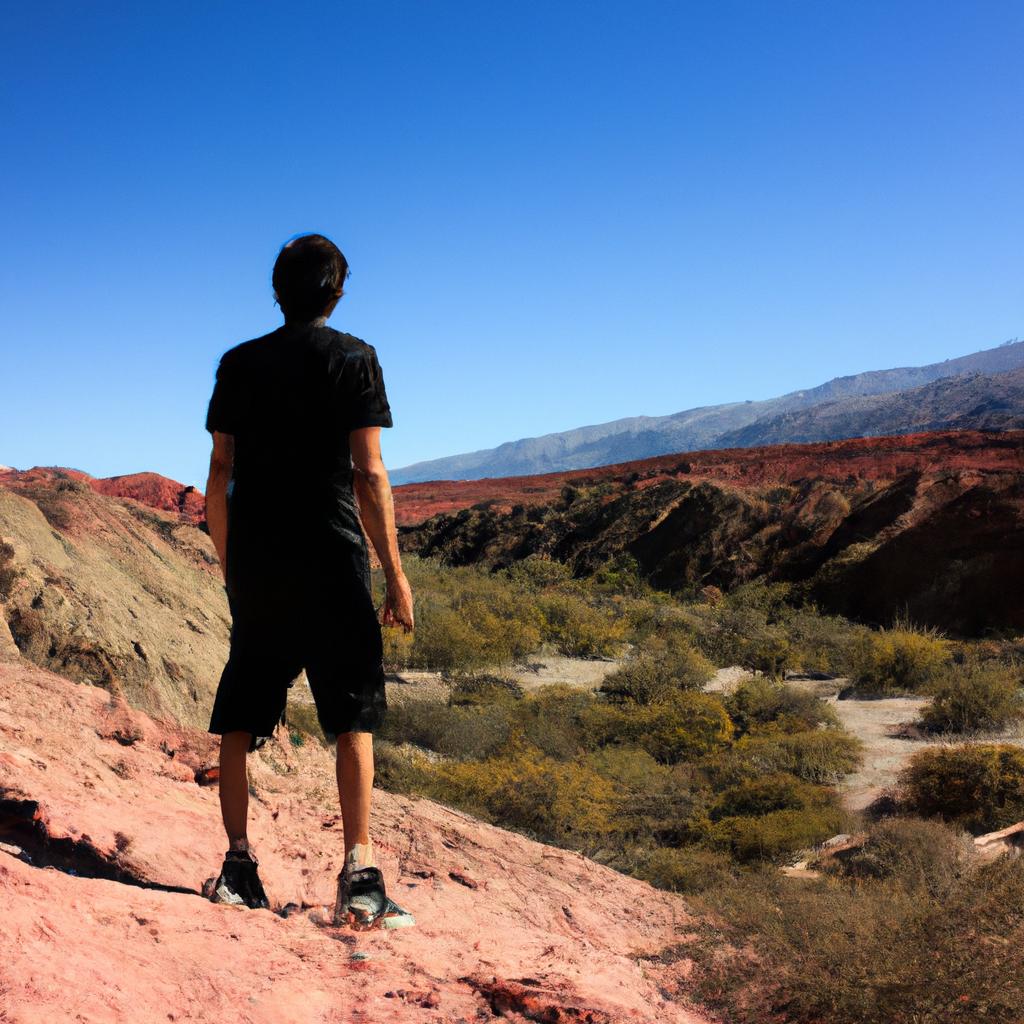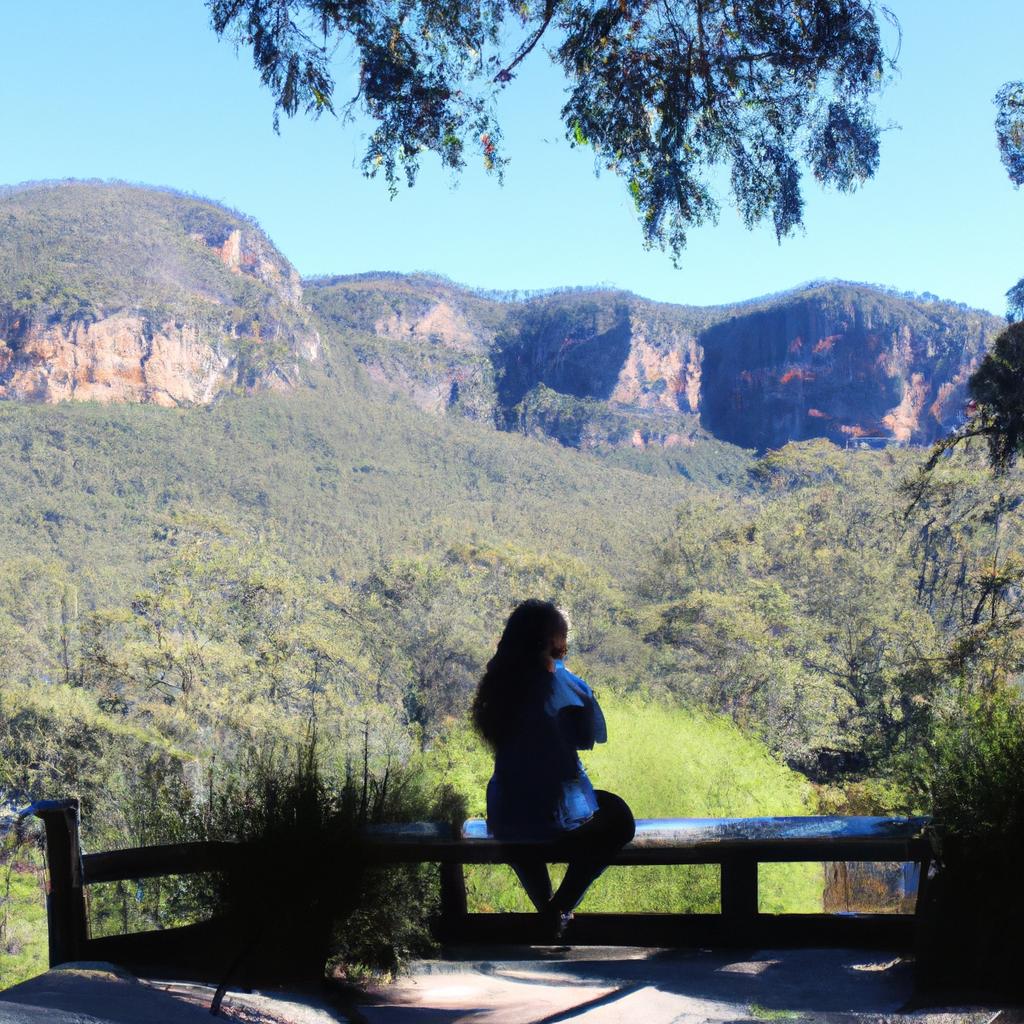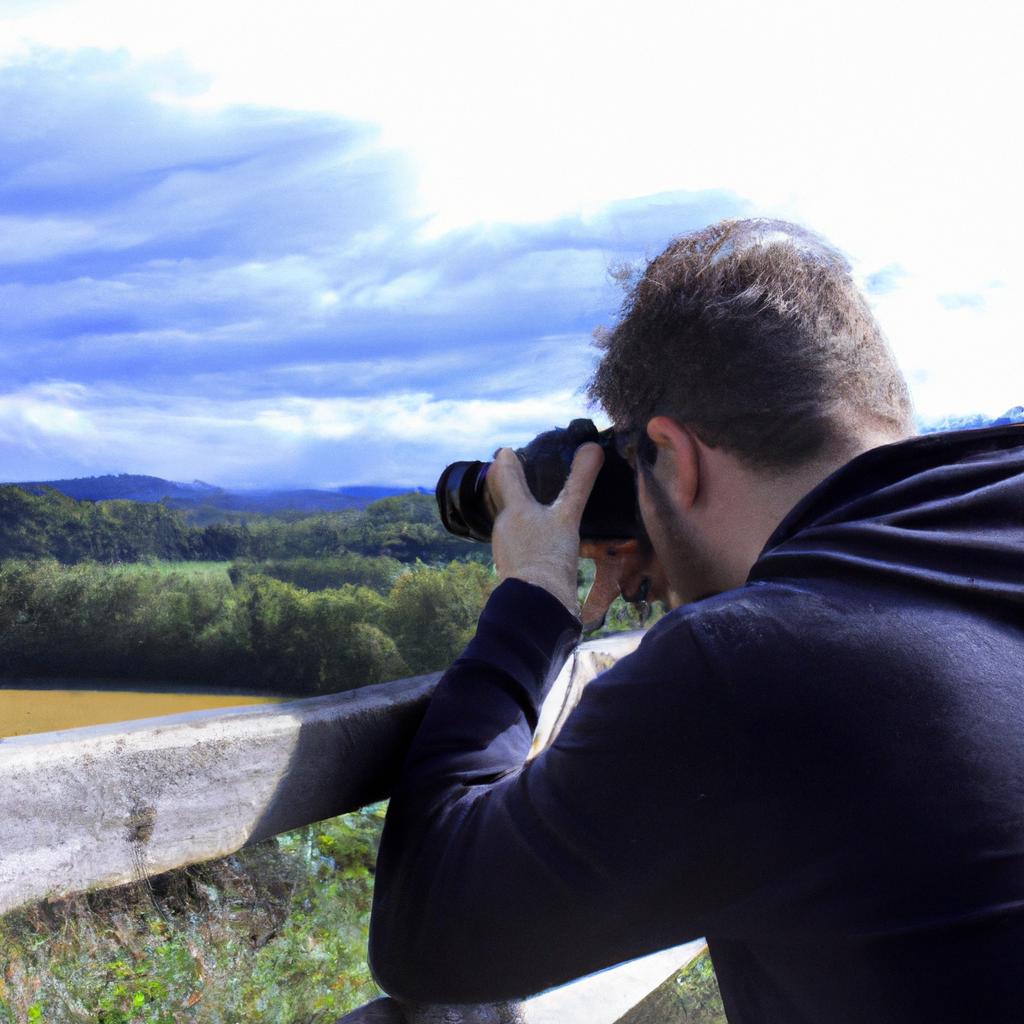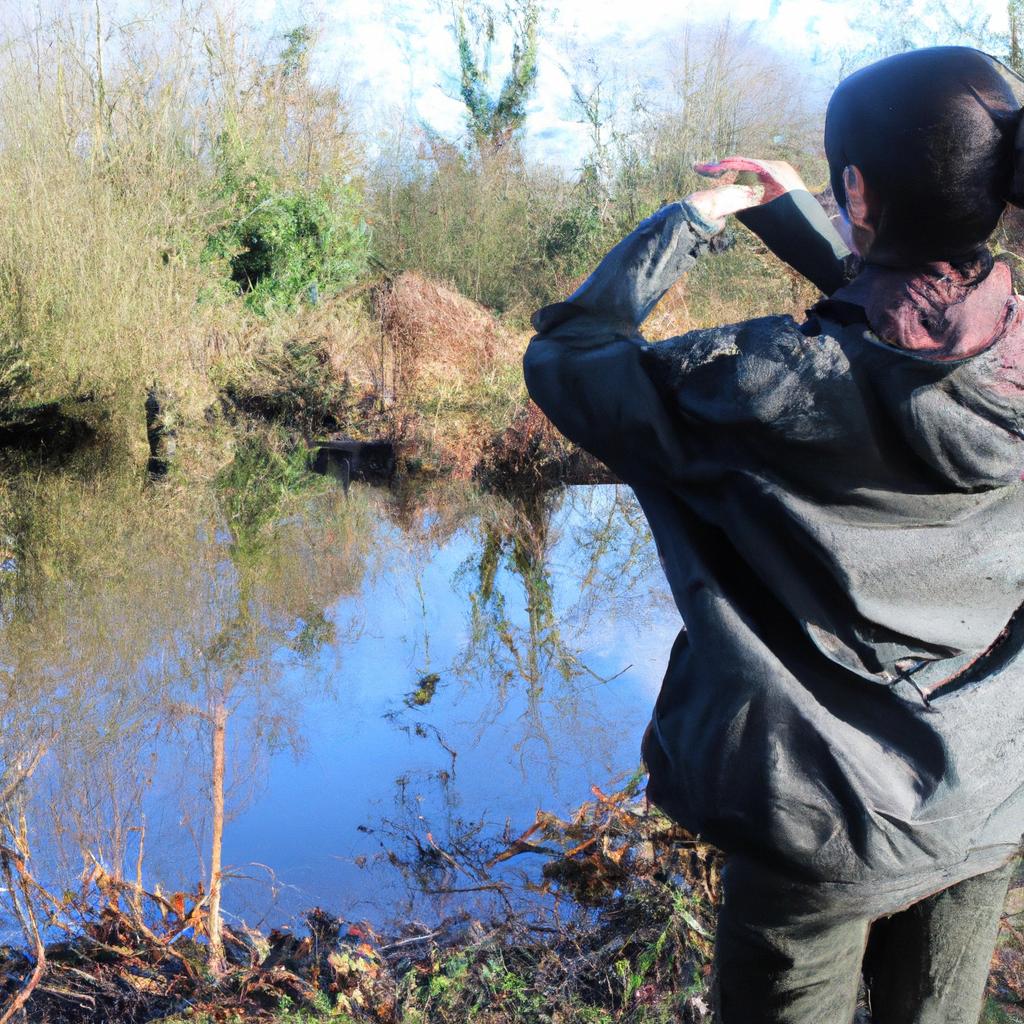Camping is a popular form of recreation travel that offers individuals the opportunity to immerse themselves in nature and embark on adventurous journeys. Through camping, travelers can take part in activities such as hiking, fishing, and wildlife observation, which allow them to connect with the natural environment and experience moments of serenity away from bustling urban landscapes. For instance, imagine a group of friends setting up camp near a crystal-clear lake surrounded by towering trees. As they roast marshmallows over a crackling fire, their laughter fills the air while they share stories under the starry night sky. This example illustrates how camping not only provides an escape from daily routines but also fosters camaraderie among participants.
Engaging in outdoor adventures through camping requires careful planning and preparation to ensure safety and maximize enjoyment. The purpose of this article is to present an informative guide for those interested in undertaking recreational travel through camping. By following these guidelines, readers will be equipped with essential knowledge regarding equipment selection, site selection, safety measures, and environmental considerations necessary for a successful camping experience. Whether it’s pitching tents amidst lush forests or parking RVs along picturesque coastlines, this comprehensive guide aims to empower individuals seeking adventure-filled travels with practical insights that contribute to unforgettable memories.
Choosing the Right Camping Gear
Imagine this scenario: You are preparing for a weekend getaway to explore the great outdoors. As you eagerly pack your bags, you realize that selecting the appropriate camping gear is crucial for a successful and enjoyable trip. From tents to sleeping bags, each piece of equipment plays an essential role in ensuring your comfort and safety during your adventure.
To begin with, let us consider the importance of a reliable tent. A sturdy shelter not only protects you from unpredictable weather conditions but also provides a sense of security amidst unfamiliar surroundings. When selecting a tent, factors such as size, weight, and durability should be taken into account. It is vital to choose one that accommodates the number of people traveling with you while remaining lightweight enough for easy transportation on foot or by vehicle.
Next on our list is choosing suitable sleeping bags. These cozy cocoons offer warmth and insulation throughout the night, enabling restful sleep after an eventful day exploring nature. Considerations when purchasing a sleeping bag include temperature rating, material composition (such as down or synthetic), weight, and compactness for convenient storage and carrying.
In addition to these essentials, there are several other items worth mentioning:
- Camp stove: A portable cooking device ensures hot meals even in remote locations.
- Water filtration system: Clean drinking water is vital; opt for filters or purifiers that remove harmful bacteria and impurities.
- Headlamp/Flashlight: These handy tools provide illumination during nighttime excursions or when navigating through dark campsites.
- First aid kit: Accidents can happen anywhere; having a well-stocked first aid kit will help address minor injuries promptly.
As shown in the table below, investing in quality camping gear not only enhances your overall experience but also contributes to your safety and well-being:
| Equipment | Importance |
|---|---|
| Tent | Provides shelter against adverse weather conditions |
| Sleeping Bag | Ensures warmth and comfort during restful sleep |
| Camp Stove | Enables cooking hot meals in remote areas |
| Water Filtration System | Provides clean drinking water wherever you go |
| Headlamp/Flashlight | Offers illumination during nighttime activities |
| First Aid Kit | Allows for immediate response to minor injuries |
By selecting the right camping gear, you lay a solid foundation for an unforgettable outdoor adventure. In the subsequent section about “Essential Tips for Setting Up Camp,” we will delve into practical advice on how to make the most of your chosen equipment and create a comfortable campsite without missing any crucial steps.
Essential Tips for Setting Up Camp
Having discussed the importance of choosing the right camping gear, let us now delve into essential tips for setting up camp. To illustrate these tips in action, consider the hypothetical case of a group of adventurers embarking on a camping trip to the picturesque Rocky Mountains.
Paragraph 1:
Upon arriving at their chosen camping spot nestled amidst towering pine trees and glistening lakes, our adventurers begin by selecting an appropriate site for pitching their tents. It is crucial to choose a level surface free from rocks and debris that could impede comfort or safety during sleep. Additionally, proximity to natural resources such as water sources and firewood should be taken into account. Once the ideal location is found, they proceed with assembling their tents using the following guidelines:
- Ensure all tent components are present before starting assembly.
- Lay out a groundsheet or tarp beneath the tent to provide extra protection against moisture.
- Begin by securing each corner of the tent firmly with stakes.
- Gradually raise the main body of the tent while checking for proper alignment and tension.
Paragraph 2:
With their shelters successfully set up, our adventurers turn their attention towards creating a functional campsite. A well-organized camp enhances both convenience and enjoyment throughout the journey. Consider implementing these practical measures:
Markdown bullet point list evoking emotional response:
- Keep cooking utensils clean and store food properly to prevent attracting wildlife.
- Establish designated areas for waste disposal and recycling to minimize impact on nature.
- Arrange sleeping bags and personal belongings neatly within individual tents.
- Create communal spaces like seating areas around a central fire pit for relaxation and camaraderie.
Paragraph 3:
As night falls over the mountainscape, our adventure seekers know that safety remains paramount even amidst excitement. Adhering to specific precautions can help ensure everyone’s wellbeing:
Markdown table evoking emotional response:
| Safety Precautions | Importance |
|---|---|
| Fire safety | Prevents accidents |
| Wildlife awareness | Minimizes risks |
| First aid knowledge | Addresses injuries |
| Emergency contacts | Enables assistance |
By staying vigilant and prepared, our adventurers can fully embrace the wonders of camping while minimizing potential hazards. In the upcoming section on “Safety Precautions for Outdoor Camping,” we will explore these precautions in greater detail and equip you with essential know-how to navigate potential challenges during your own outdoor expeditions.
As we move forward into the realm of safety precautions for outdoor camping, remember that being well-informed is instrumental in ensuring a memorable experience amidst nature’s splendor.
Safety Precautions for Outdoor Camping
Setting up camp is just the first step towards a successful outdoor adventure. Once your tent is pitched and your sleeping bags are laid out, it’s important to prioritize safety precautions to ensure an enjoyable experience. By taking appropriate measures, you can minimize risks and fully immerse yourself in the beauty of nature.
Imagine this scenario: Sarah and her friends decide to go camping in a remote forest area. Excited about their trip, they arrive at the campsite and start setting up their tents near a picturesque lake. However, as night falls, they realize they forgot some essential items back home. With no extra batteries for their flashlights or enough food to last them through the weekend, their excitement turns into frustration.
To avoid such situations, here are some crucial safety precautions that every camper should keep in mind:
-
Plan Ahead:
- Research the location: Learn about the terrain, weather conditions, wildlife presence, and any potential hazards.
- Check local regulations: Make sure you comply with any permits or restrictions required for camping in the area.
- Create an itinerary: Outline your activities and estimated timeframes while considering daylight hours.
-
Pack Wisely:
- Essential gear: Bring proper equipment like tents, sleeping bags, cooking utensils, water filters/purifiers, maps/compasses.
- First aid kit: Include basic medical supplies such as bandages, antiseptic ointments, pain relievers.
- Extra provisions: Carry sufficient food and water supplies for the duration of your stay.
-
Stay Aware of Surroundings:
- Wildlife encounters: Respect animals’ space by observing from a safe distance; store food securely to prevent attracting them.
- Weather changes: Keep track of weather forecasts beforehand and be prepared for sudden shifts by packing appropriate clothing layers.
-
Leave No Trace:
- Preserve nature’s integrity by adhering to principles that include properly disposing of waste, minimizing campfire impact, and respecting local flora and fauna.
By following these safety precautions, you can better ensure a smooth camping experience. Remember that being prepared not only enhances your enjoyment but also protects the environment for future visitors.
Exploring Different Types of Camping
Once you have established the necessary safety precautions for outdoor camping, it is time to delve into the exciting world of different types of camping. Each type offers unique experiences and caters to various interests and preferences. Let’s take a closer look at some popular forms of camping:
-
Backpacking: Imagine strapping on a sturdy backpack filled with essential supplies and embarking on an adventure through rugged terrain. Backpacking allows you to immerse yourself in nature, often requiring hikes to remote locations where traditional vehicles cannot reach. It challenges your physical endurance while rewarding you with breathtaking views and a sense of accomplishment.
-
Car Camping: If carrying heavy loads on your back isn’t your cup of tea, car camping might be more suitable. With this approach, you can drive directly to designated campsites or even set up camp right next to your vehicle. This option provides convenience as it enables easy transportation of gear and amenities such as coolers, chairs, and larger tents.
-
RV Camping: For those seeking a blend of comfort and adventure, recreational vehicle (RV) camping offers an excellent solution. RVs provide mobile accommodation equipped with beds, kitchenettes, bathrooms, and other amenities that bring the comforts of home to the great outdoors. You can explore vast landscapes without sacrificing modern conveniences.
-
Glamping: Combining glamour with camping, glamping has gained popularity among individuals who appreciate nature but also enjoy luxury accommodations. Glamping sites feature stylishly designed tents or cabins furnished with comfortable beds, cozy furniture, electricity, heating/cooling systems, and sometimes even private bathrooms. It allows you to experience the beauty of nature without compromising on comfort.
To further illustrate these options effectively:
| Type | Difficulty Level | Facilities |
|---|---|---|
| Backpacking | High | Basic amenities |
| Car Camping | Low | Campsite facilities |
| RV Camping | Moderate | Home-like amenities |
| Glamping | Low | Luxury accommodations |
As you can see, each type of camping offers a unique balance between adventure and comfort. Consider your preferences, level of outdoor experience, and the amount of equipment you are willing to carry when choosing the right approach for your next camping trip.
Now that we have explored different types of camping, it is time to move on to planning an itinerary for a successful camping adventure. By carefully organizing your activities and destinations, you can maximize enjoyment while minimizing potential challenges. Let’s delve into this topic further in the upcoming section about planning an itinerary for a camping trip.
Planning an Itinerary for a Camping Trip
Imagine yourself waking up to the sound of birds chirping, surrounded by lush green trees and crisp fresh air. You step outside your tent and witness a breathtaking sunrise over a serene lake. This is just one example of the countless unforgettable experiences that camping can offer. In this section, we will delve into different types of camping, each catering to unique preferences and interests.
-
Wilderness Camping: For those seeking an immersive nature experience, wilderness camping is an excellent choice. With minimal amenities and often located in remote areas, this type of camping allows you to disconnect from the hustle and bustle of daily life. From exploring untamed forests to discovering hidden waterfalls, wilderness camping offers unparalleled opportunities for adventure and solitude.
-
RV Camping: If you prefer a more comfortable and convenient outdoor experience, RV camping might be ideal for you. Recreational vehicles provide all the comforts of home while allowing you to travel freely from one destination to another. Whether it’s a luxurious motorhome or a cozy camper van, RV camping enables you to enjoy the beauty of nature without compromising on comfort.
-
Glamping: Combining glamour with camping, glamping has gained popularity among those who desire a touch of luxury during their outdoor escapades. Picture yourself staying in fully furnished safari tents or eco-friendly treehouses equipped with modern amenities like electricity and running water. Glamping not only provides comfort but also immerses you in stunning natural landscapes.
-
Backpacking: For intrepid adventurers seeking ultimate freedom and flexibility, backpacking is an exhilarating option. Carrying everything they need on their backs, backpackers explore remote trails and rugged terrains where traditional campgrounds may not exist. It allows them to discover hidden gems off the beaten path while embracing self-sufficiency and simplicity.
Embrace these diverse options as gateways to extraordinary adventures! To further assist your exploration into various forms of camping, refer to the table below that compares key features of each type:
| Camping Type | Amenities | Accessibility | Unique Features |
|---|---|---|---|
| Wilderness | Minimal | Remote | Solitude |
| RV | Full | Flexible | Comfort |
| Glamping | Luxurious | Scenic | Elegance |
| Backpacking | Basic | Challenging | Flexibility |
By understanding different types of camping and their distinct characteristics, you can choose the one that aligns with your preferences.
Transition into subsequent section: As you plan your exciting camping trip, it’s essential to consider not only where you’ll rest your head but also what culinary delights await you in the great outdoors. Cooking Tips and Meal Ideas for Camping provide guidance on how to create delicious meals while immersing yourself in nature’s beauty.
Cooking Tips and Meal Ideas for Camping
After carefully planning your itinerary for a camping trip, it’s time to take advantage of the great outdoors and immerse yourself in nature. Exploring the natural surroundings can add an extra layer of excitement and fulfillment to your adventure. For instance, imagine waking up early in the morning surrounded by towering trees, listening to the melodious songs of birds as they greet the day – this is just one example of the incredible experiences that await you.
To make the most out of your nature exploration while camping, consider implementing these tips:
- Research Local Flora and Fauna: Before embarking on your camping journey, familiarize yourself with the local flora and fauna. This knowledge will not only enhance your understanding of the ecosystem but also allow you to identify different plant species or spot unique wildlife during your hikes.
- Engage in Birdwatching: Pack a pair of binoculars and embrace birdwatching during your camping trip. Birds come in various colors, sizes, and behaviors, making them fascinating subjects for observation. Take note of their distinct calls and try identifying different species based on their physical characteristics.
- Stargaze at Night: Away from city lights’ glare, nighttime presents an excellent opportunity for stargazing. Look up into the vast expanse above you and marvel at constellations like Orion’s Belt or Ursa Major (the Big Dipper). Consider downloading a stargazing app on your smartphone to help you navigate through celestial wonders.
- Take Guided Nature Walks: If available, join guided nature walks led by experienced wilderness guides or park rangers. These experts possess extensive knowledge about the area’s ecosystems, geological formations, and historical significance. Their insights can provide valuable context to enrich your appreciation for Mother Nature.
Now let’s explore some examples of stunning natural features found within national parks across North America:
| National Park | Notable Natural Feature | Description |
|---|---|---|
| Yosemite | Half Dome | A granite dome towering over the valley, providing breathtaking vistas. |
| Grand Canyon | Colorado River | Carved through millions of years, this river created one of Earth’s wonders. |
| Banff | Moraine Lake | Adorned with turquoise waters and surrounded by majestic peaks. |
| Glacier Bay | Glaciers | Witness the awe-inspiring sight of massive glaciers calving into the sea. |
By immersing yourself in nature exploration during your camping trip, you can forge a deeper connection with the environment around you. Whether it be observing birds in flight or marveling at natural wonders like glaciers and granite domes, these experiences will leave lasting memories that go beyond just pitching tents and setting up campfires.
Remember to embrace curiosity and respect for the delicate balance of ecosystems as you explore, ensuring future generations can enjoy these pristine landscapes as well. So lace up those hiking boots, grab your binoculars, and embark on an adventure that combines recreation travel with a deep appreciation for our planet’s natural beauty.



